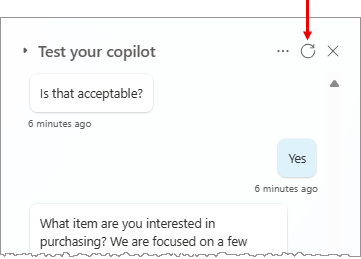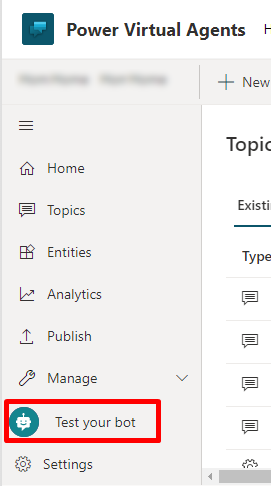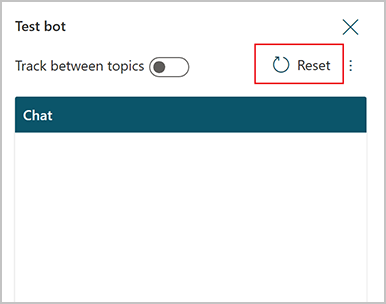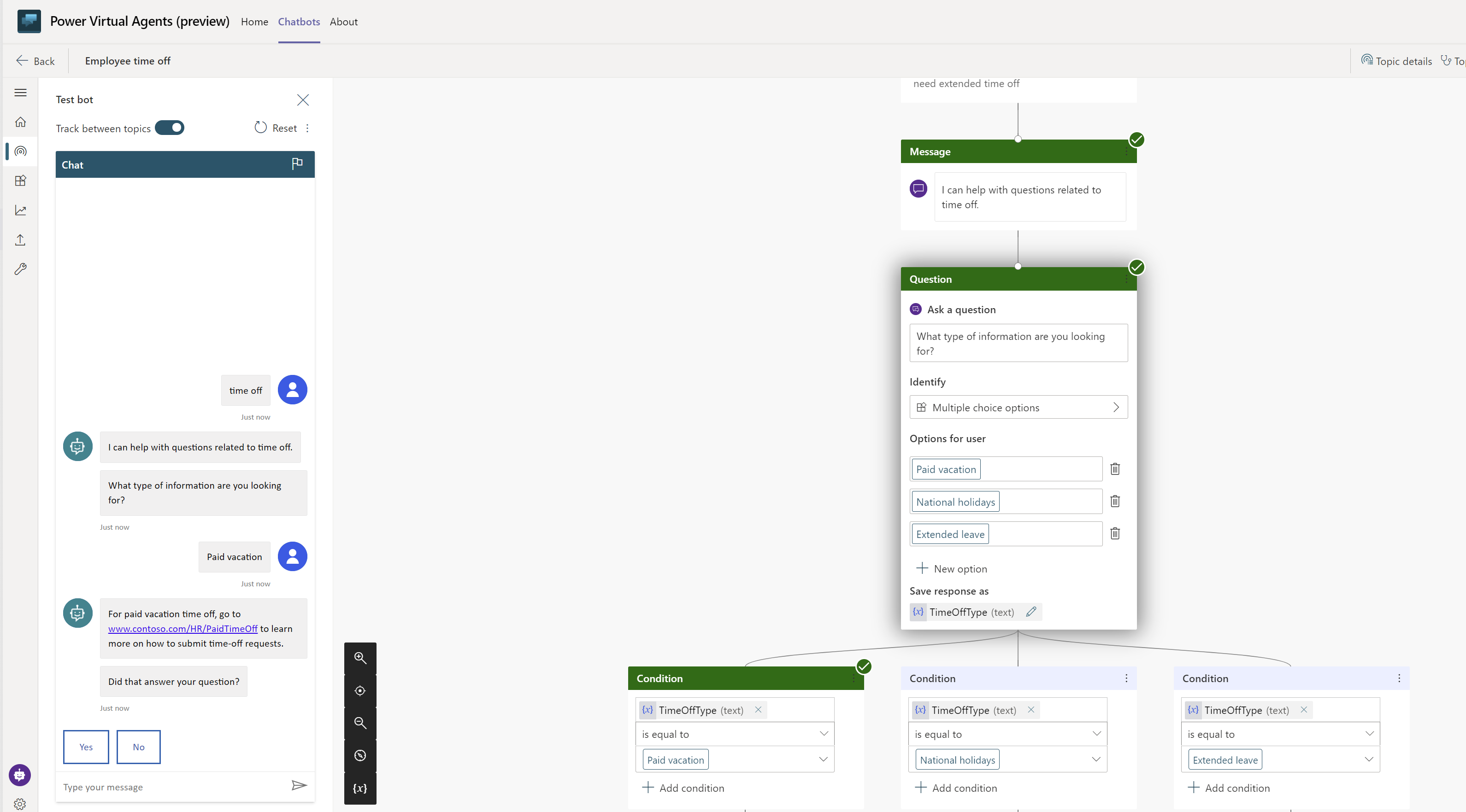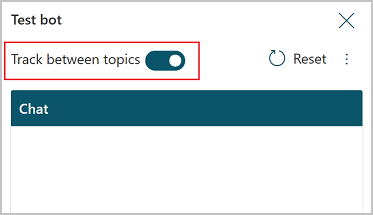Test your copilot in Copilot Studio
Important
Power Virtual Agents capabilities and features are now part of Microsoft Copilot Studio following significant investments in generative AI and enhanced integrations across Microsoft Copilot.
Some articles and screenshots may refer to Power Virtual Agents while we update documentation and training content.
As you design your copilot in Copilot Studio, you can use the Test copilot pane to see how the copilot leads a customer through the conversation.
To help you find and fix unexpected behavior, you can enable tracking between topics to take you through the copilot conversation step by step, and go to the corresponding node in the authoring canvas.
Use the Test copilot pane to walk through your copilot conversations as a user. It's a good way to make sure your topics are working and that conversations flow as you expect.
Preview a conversation
If the Test copilot pane is hidden, open it by selecting Test your copilot at the bottom of the navigation pane.
In the Type your message field, enter some text. If the text is similar to a trigger phrase for a topic, that topic begins.
Select the copilot response in the Test copilot pane. This takes you to the topic and the node that sent the response. Nodes that have fired have a colored checkmark and a colored bottom border.
As you continue the conversation within the active topic, notice that each node that fires is marked with the checkbox and bottom border, and centered on the canvas.
If you would like to follow the whole conversation automatically, as it moves from topic to topic, turn on Tracking at the top of the Test copilot pane.
Continue the conversation until you're satisfied that it flows as intended.
You can update a topic at any time while interacting with the test copilot. Simply save your topic to apply changes and continue the conversation with your copilot.
Your conversation is not automatically cleared when you save a topic. If at any point you want to clear the conversation from your test copilot and start over, select the Reset icon.
Test variable values
You can observe the values of your variables as you test your copilot.
Select Variables on the secondary toolbar to open the Variables pane.
Switch to the Test tab and expand the desired variable categories.
As you proceed with your test conversation, you can monitor the value of the variables in use.
To inspect variable properties, select the desired variable. The Variable properties panel appears.
For information about using the Variables pane to test slot filling, see Use entities and slot filling.
Save conversation snapshots
While you're testing your copilot, you can capture the content of the conversation, and diagnostics data, and save it as a file. You can then analyze the data to troubleshoot issues, such as the copilot not responding in the way you expect.
Warning
The snapshot file contains all your copilot content, which may include sensitive information.
At the top of the Test copilot pane, select the More icon (…), then select Save snapshot.
A message appears, notifying you that the snapshot file might include sensitive information.
Select Save to save the copilot content and conversational diagnostics in a .zip archive named botContent.zip.
The botContent.zip archive contains two files:
- dialog.json contains conversational diagnostics, including detailed descriptions of errors.
- botContent.yml contains the copilot's topics and other content, including entities and variables.
Note
Help us improve Copilot Studio by reporting issues. Use the Flag icon near the top of the test pane to submit your conversation ID to Microsoft. The ID is a unique identifier that Microsoft uses to troubleshoot issues in a conversation. Other information, such as what is stored in a conversation snapshot file, is not sent when you report an issue. All information collected remains anonymous and will be used to help improve copilot quality.
Feedback
Coming soon: Throughout 2024 we will be phasing out GitHub Issues as the feedback mechanism for content and replacing it with a new feedback system. For more information see: https://aka.ms/ContentUserFeedback.
Submit and view feedback for

